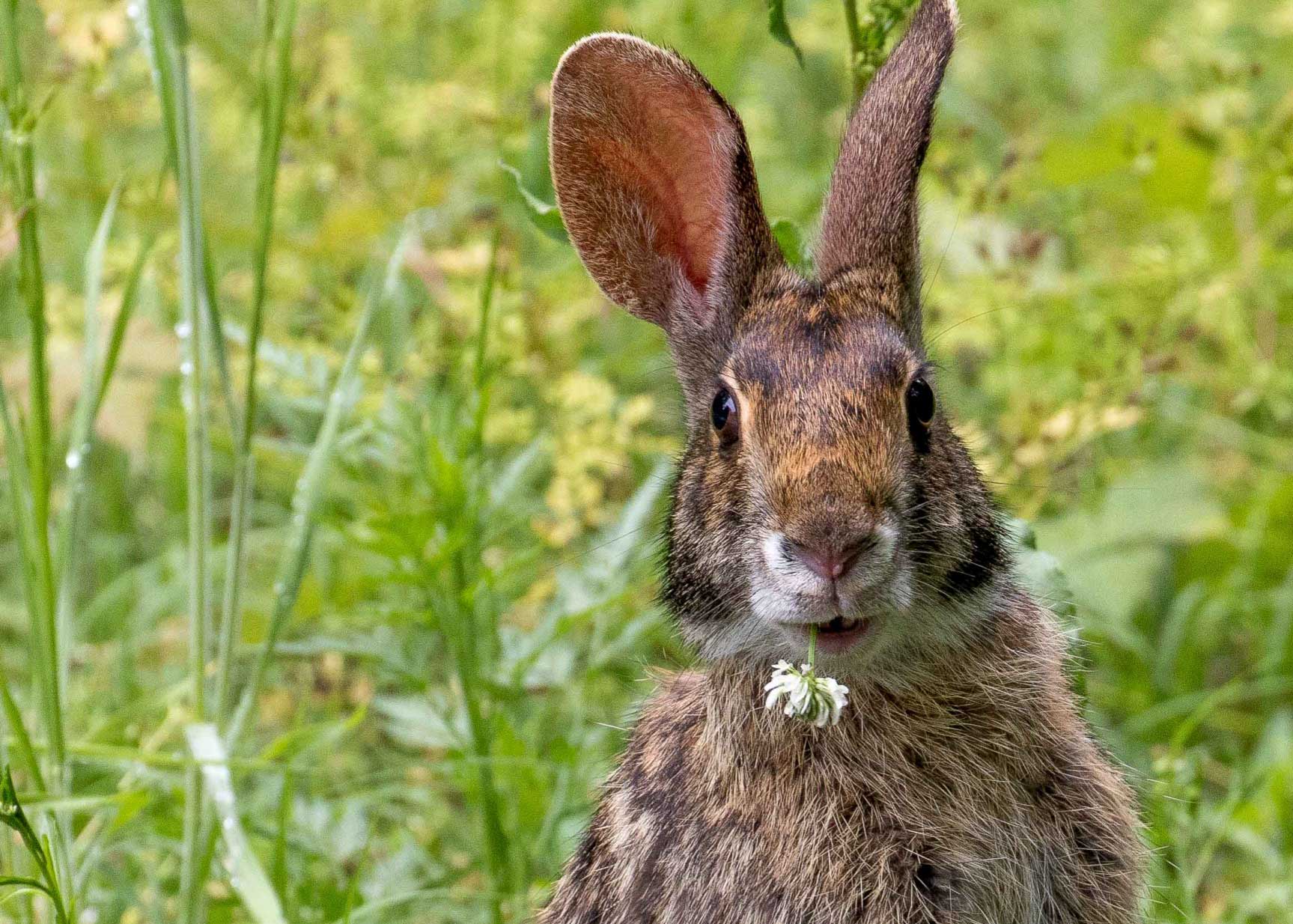
Missouri
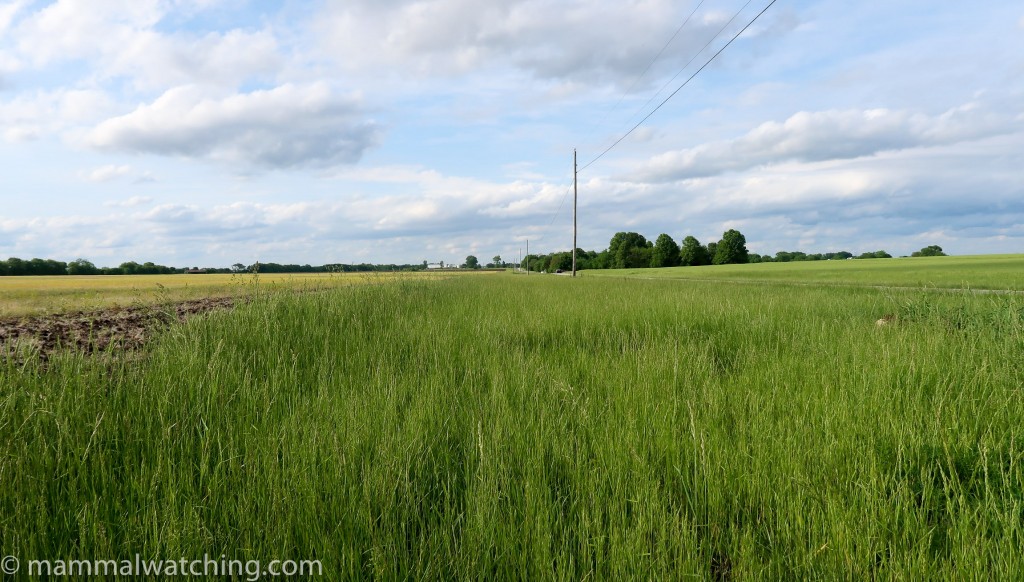
I spent a night in Missouri in May 2018.
Big Oak Tree State Park
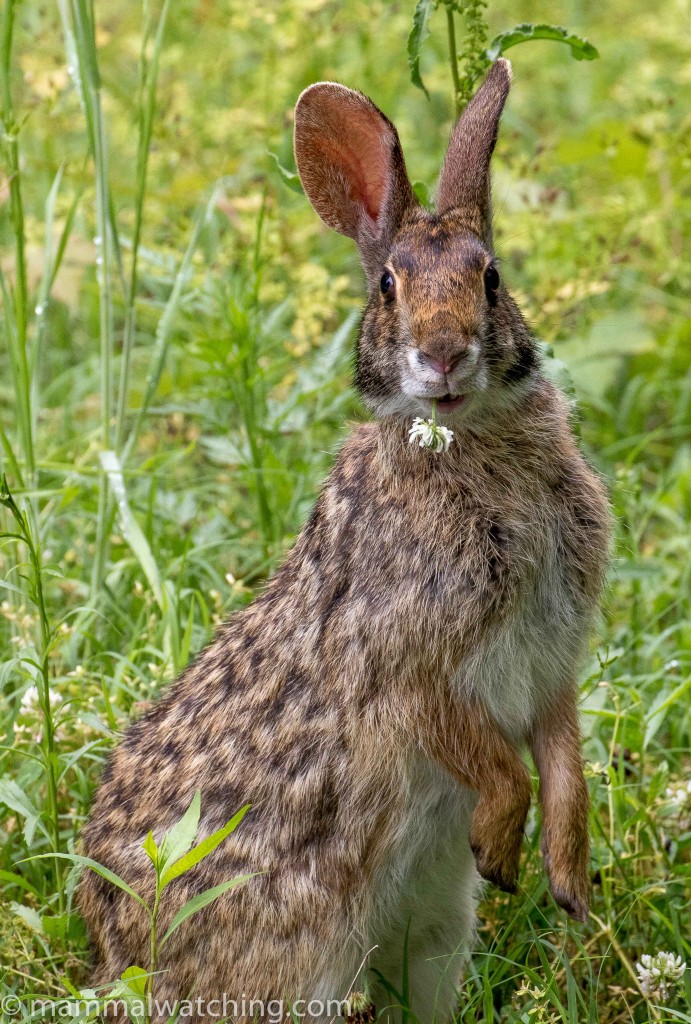
Swamp Rabbit, Sylvilagus aquaticus
Curtis Hart told me that Swamp Rabbits are easy to see here at dusk and dawn. I stopped in for 20 minutes at midday and found a confiding animal at the start of the trail (which begins at the end of the short park road). I also saw several Eastern Fox Squirrels and – what I assume was – an Eastern Chipmunk shooting across the road.
Rock Bridge State Park
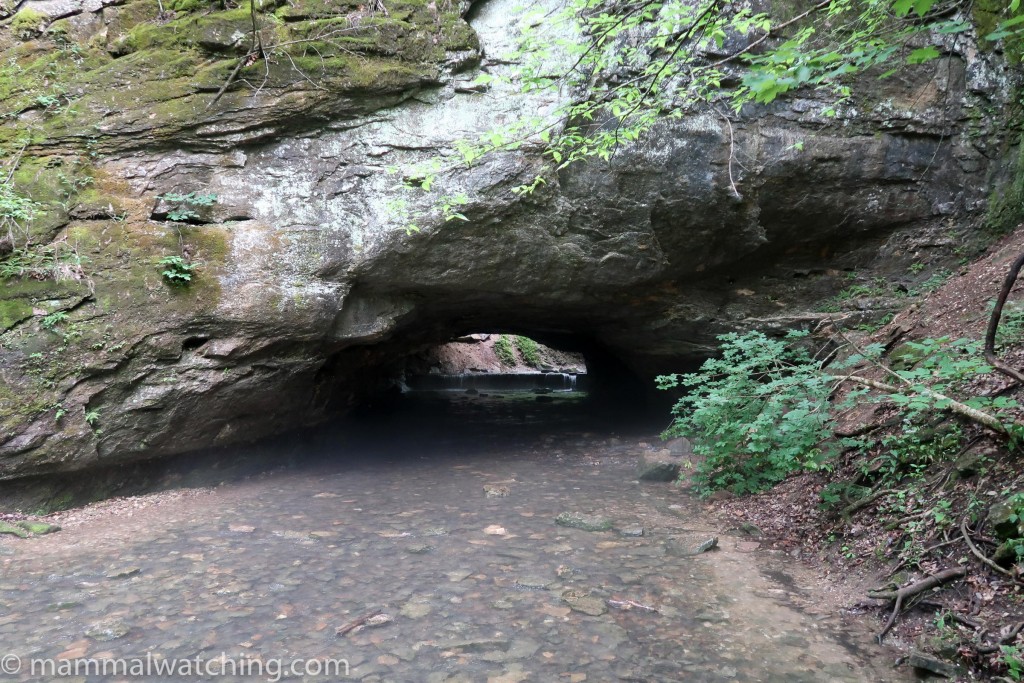
Rock Bridge State Park is home to several species of bats including Grey Myotis. The Devil’s Icebox Cave provides home to a maternity colony of several thousand Greys, which appear not to have been badly affected by White Nose Syndrome. The same cannot be said for Little Brown Bats and Northern Myotis, both of which have been lost from the caves here. In the summer a few Big Brown Bats are also in residence, with additional species in the winter.
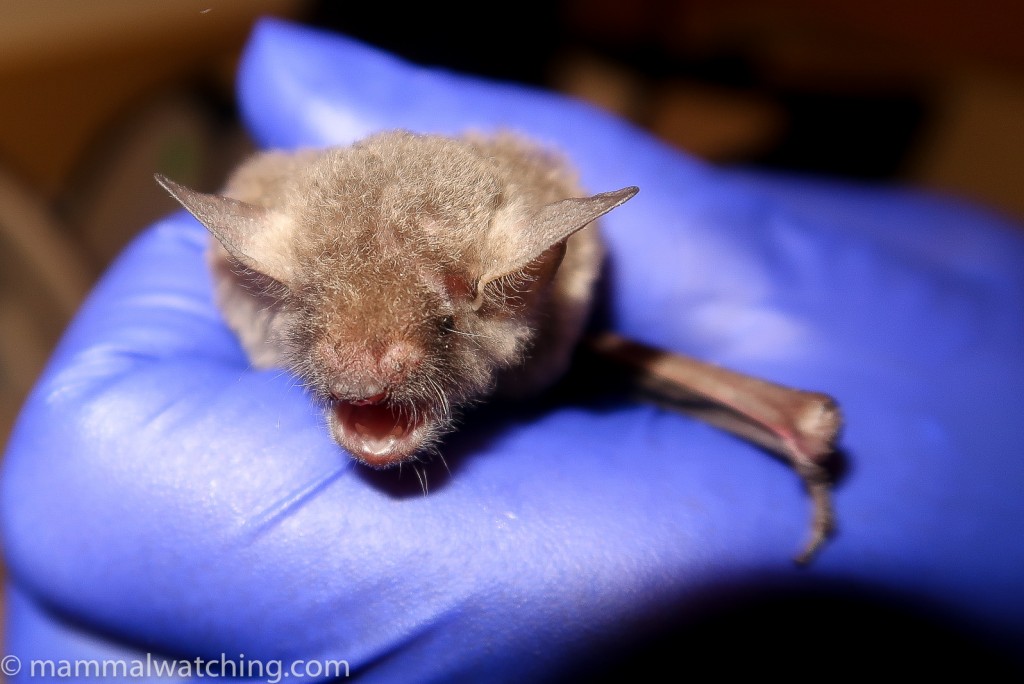
Grey Myotis, Myotis grisescens
When I told Fiona Reid I wanted to see a Grey Myotis she put me in touch with local bat scientist Sybill Amelon. Sybill, who runs bat surveys throughout the summer, was generous enough both to invite me along and organise netting when I was there at a spot that ought to produce a Grey Myotis.
But she couldn’t do anything about the weather: a torrential thunderstorm began just as we had almost finished setting up a triple high net near the rock bridge. We gave up on the bats and went back to Sybill’s place where she showed me a few of the many bats she is caring for including a Grey Myotis. It was interesting to see Grey and Northern Myotis side by side. Colouration apart, the Northern Myotis has much longer ears (which pull forward past its nose), plus the tail membranes of the two species are quite different.
In Grey Myotis, the membrane fastens to both the inside and outside of the bats’ ankles.
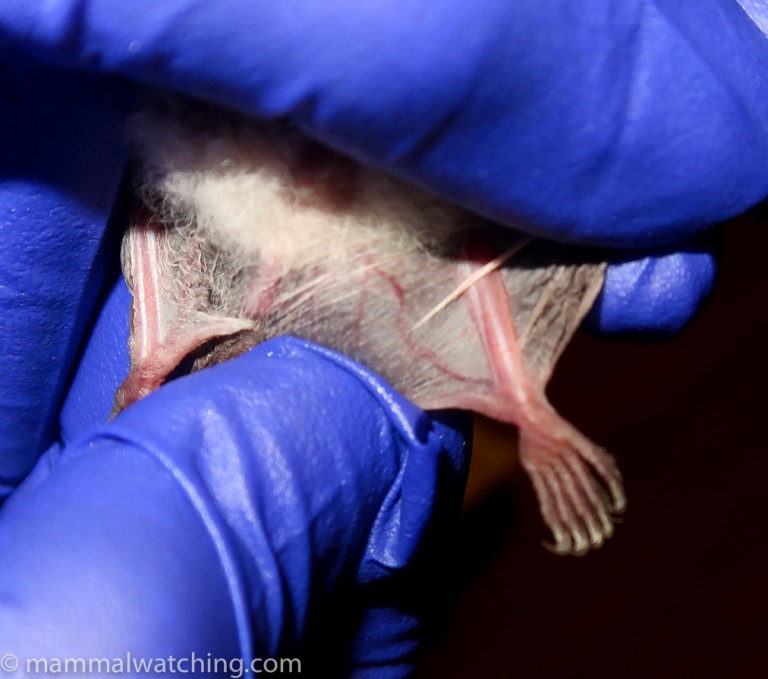
Grey Myotis, Myotis grisescens
In the Northen Myotis, the membrane fastens to the inside of the ankle too. But on the outside of the feet it attaches at the base of the toes.
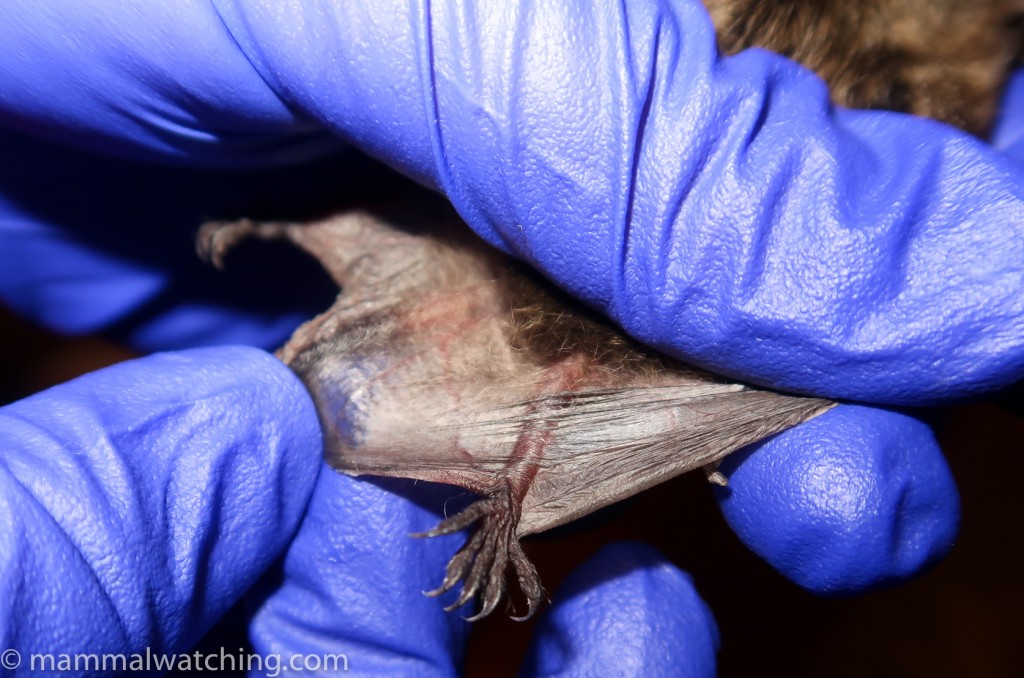
Northern Myotis, Myotis septentrionalis
Next morning the rain had almost stopped at 5 a.m. so I returned to the caves. Sybil and her Ananbat met me there (which was above and beyond the call of duty and proving yet again that bat biologists are the absolute best!). There was very little bat activity but – from the boardwalk above the Devil’s Icebox Cave – I did see one or two bats fly into one of the cave entrances just before sunrise. Sybill’s bat detector confirmed they were indeed Grey Myotis (which have a distinctive call trace). Mission accomplished. In better weather you can usually see the Grey Myotis flying around the parking area here.
I saw a few Eastern Fox Squirrels and a White-tailed Deer in the park too.
I looked for Prairie Voles at Tucker Prairie briefly in the afternoon (30 minutes east of Columbia), but the foul weather at night squashed my plans to look around there after dark.
Community Reports
Community Reports
We don’t have any reports for this area yet. Please submit one.
Also See
Please email me if you have tips for mammal watching in this area.


Leave a Reply
You must be logged in to post a comment.